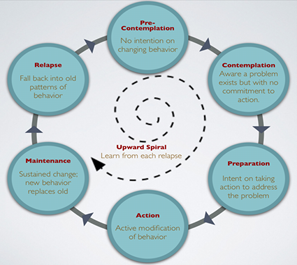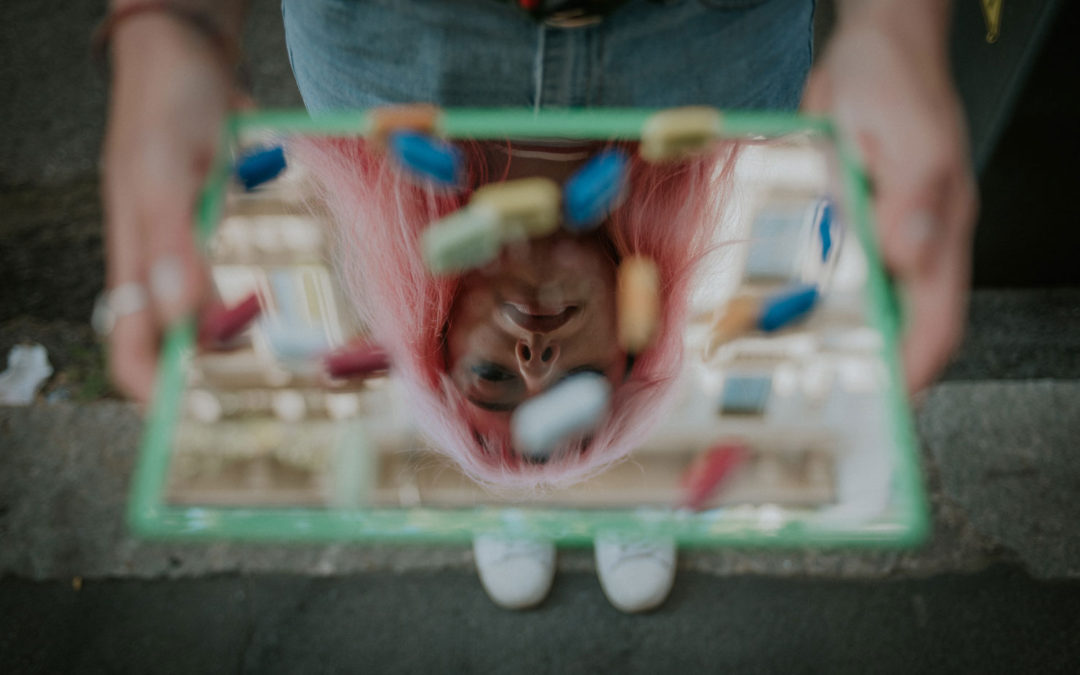Recovery from addictions, eating disorders, and other mental health conditions are journeys that can take significant time and effort. The same can be true about the process of changing any deeply ingrained habit or pattern that may bring a person into therapy. For both the individual attempting transformation and the loved ones supporting that person’s change, the path to a new way of being may have many false starts, backward steps, and other frustratingly winding curves.
The stages of change model provides a roadmap that delineates what a person can expect at various points in their journey toward change. It identifies six main stages: pre-contemplation, contemplation, preparation, action, maintenance, and relapse.
Pre-contemplation
During this stage, the person is not aware that they have a problem. They may refuse to discuss the topic with loved ones, deny any need for help, and maintain that they do not need to make any changes.
Contemplation
The key feature of this phase is a high degree of ambivalence. The individual has come to recognize that a problem exists, and they are open to receiving help; however, they tend to experience significant fear about making changes, and thus, they can go back-and-forth between displaying a desire for change and maintaining rigidity around old patterns.
Preparation
While in the preparation phase, a person is ready and motivated to make changes but is uncertain about how to do so. During this phase, a therapist can assist the individual in establishing strategies for change, including developing coping skills, creating and holding boundaries, and reducing distress related to triggering situations. Through this work, the individual develops greater confidence in their ability to make changes.
Action
The action stage is when the person makes substantive changes that move them towards well-being and reduces their engagement in maladaptive behaviors. In this stage, the individual is implementing the strategy that they have developed during the preparation stage, and they are engaging in problem-solving related to issues they may encounter.
Maintenance
During this stage, the individual has been able to sustain their changes over at least six months. They are actively maintaining the practice of new behaviors and new ways of being, including healthy self-care routines and coping skills.
Relapse
Although relapse is not inevitable for everyone, it is common that backsteps occur as change and progress rarely—if ever—happens along a linear trajectory. During relapse, the individual slips into old ways of thinking and behaving. Ideally, the person can learn from these backslides, and as they move back into recovery, the lessons they take from their relapse experience can serve to strengthen their overall recovery.
Moving through the Stages
 As the image of this model shows, the change process is cyclical and without an official end. Additionally, a person may not move through the change process in perfect chronological progression; instead, they may jump forward and back and repeat stages sometimes in a short period of time.
As the image of this model shows, the change process is cyclical and without an official end. Additionally, a person may not move through the change process in perfect chronological progression; instead, they may jump forward and back and repeat stages sometimes in a short period of time.
Thus, there is not really a “yes” or “no” answer to the question of whether one is ready to change. Instead, a better question might be, “where am I currently within this model?” From there, it is possible to identify what might be keeping a person stuck at a certain stage and strategize ways to move beyond stuck points and into the next stage. In therapy, this is exactly what your clinician can work with you to help you do.
Contact Us to Connect with a Therapist
If you or someone you know could benefit from navigating a process of change, we are here to help. At Greenway Therapy, we have multiple therapists who can guide you on your journey, provide resources, and support you.
Have more questions? E-mail us at admin@greenwaytherapy.com, or call us at 800-353-6402, and a therapist would be happy to talk with you!
Rachel Hines is an Provisional Licensed Professional Counselor at Greenway Therapy. Learn more about her on her BIO page.





